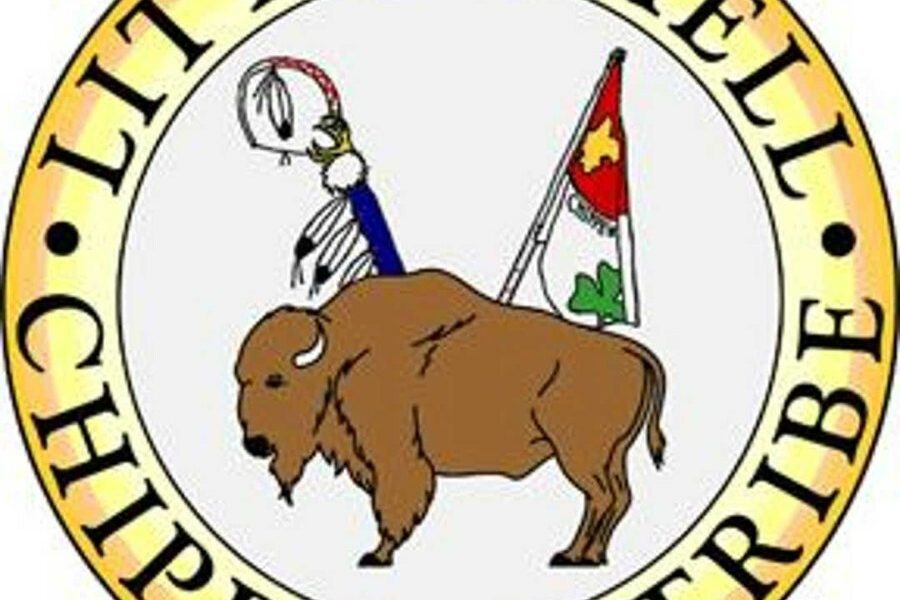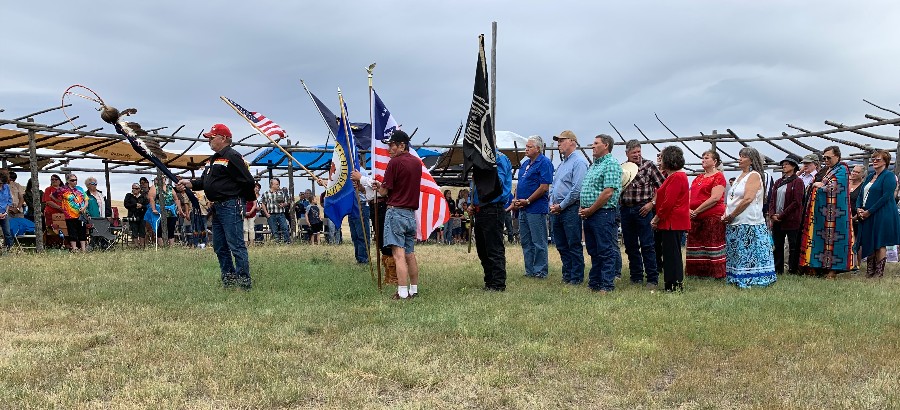The Little Shell Tribe of Montana Just Got Federal Recognition. Why Did It Take So Long?
Gabriel Furshong

Five generations of Little Shell people lived and died as members of an American Indian tribe that, according to the federal government, didn’t exist.
Gerald Gray, 52, represents the sixth generation to carry on the fight. Last week, the current chairman of the tribal council was at his office in Billings, Montana when Congress finally approved the Little Shell of Chippewa Indians Tribal Restoration Act, a bill granting federal recognition to the Montana tribe of more than 5,000 people. Gray’s mind was with those who came before him.
“Every morning I smudge and say my morning prayers to my relations because I think they still guide the Little Shell people, ” he said. “I think of my grandfather Ernest Gray who was sent to boarding school as a little boy to remove the Indian from the Indian. They wanted to teach him the white man’s ways.”
Now, after more than a century of struggle that began with a controversial treaty agreement in 1892, current and future generations of Little Shell people will be recognized as citizens of a sovereign indigenous nation, the 574th tribe to be recognized by the United States. The tribe will be permitted to exercise limited self-governance through its tribal council. Enrolled citizens will also be able to access federal funding for healthcare, education, and economic development which the U.S. is legally obligated to provide as compensation for appropriating their ancestral land and resources.
These rights and benefits can be life-changing for Native people whose forebears were frequently subjected to violent military aggression and denied basic civil rights — people who often remain politically and economically isolated today. Despite these crimes and inequities, Congress rarely delivers justice and reconciliation to Native people who lack federal recognition. There are hundreds of unrecognized tribes in the U.S., but Congress has passed just three tribal recognition bills since 1995, including the Little Shell bill last week, while more than 80 bills have died. During this same time period, the Bureau of Indian Affairs, which can recognize tribes regardless of congressional action, accepted 10 tribes and rejected 22 others through an arduous administrative process that can require many years of legal navigation.

Members of the Little Shell Chippewa Tribe hold a flag ceremony at the Little Shell annual pow wow at First People’s Buffalo Jump in Ulm, Mont. on Aug. 24. Tribal Chairman Gerald Gray, in the green checkered shirt, stands next to Rep. Greg Gianforte, in a blue shirt and tan ball cap. Councilwoman Colleen Hill, in blue skirt and white blouse, stands behind Gray. (Photo by Gabriel Furshong)
The Little Shell have decades of experience traveling down both of these paths, and their experience sheds light on what many Native leaders and lawmakers consider a deeply flawed process fraught by bureaucratic inflexibility and political bias. The tribe’s dual struggle also points to a significant disagreement among lawmakers over which process should be given priority in deciding future cases.
“I think the better place to have this done is within the agency,” U.S. Senator Jon Tester (D-Mont.) told me. “The BIA has a better chance of tracing lineages and determining whether the people seeking recognition are bona fide. But this is the third [administration] I’ve served under and none of them could get it done. Congress acted because no one else was willing to do their job.”
The Little Shell recognition act was the first bill Sen. Tester introduced after he was elected to the Senate in 2006. He sponsored the bill, in part, to apply pressure on the BIA to make a final decision on the Little Shell’s case, which had been pending since 1978. The Little Shell weren’t the only tribe that had been waiting for decades for a final decision, and in 2015, the Obama administration significantly revised the BIA process, a move that was supported by the National Congress of American Indians and other groups focused on American Indian rights. That rule was opposed by some lawmakers who viewed it as an attempt by BIA staff to make decisions that should be left to Congress.
This seems to be the view held by Montana’s lone representative in Congress, Greg Gianforte, who is now running for governor. He sponsored the Little Shell bill and helped it pass the House twice, first in 2018 and again this year. In August, he attended the tribe’s annual pow wow near Ulm, Mont., and I asked him whether he thought Congress or the BIA should be the primary influence on tribal recognition.
“I think it’s appropriate that Congress have a hand in doing the recognition,” he said, but he stopped short of saying Congress should be the sole authority, a position held by some of his GOP colleagues.
He also sought to defend Congress against accusations that it has neglected tribal recognition issues.
“It is very difficult to get things done in Washington by design,” he told me. “Our founding fathers said that if any one body or if any one person were in charge, that would be tyranny. So, it is purposefully difficult to get stuff done in Washington. You need to get bills out of committee, you need to get them out of your body, they need to pass the other bicameral body, and then the president has to sign it. So, it’s a long road.”
Too long, according to Sen. Tester, who has watched his bill get blocked by individual lawmakers too many times over the last 12 years.
“It’s a wrong that has gone on far too long,” he said. “It needs to be fixed. The [tribe has] been working in good faith for generations and kept coming up short.”
For these reasons, Tester re-introduced his recognition bill in six consecutive sessions following his first attempt in 2006. The seventh try did the trick. Earlier this year, he and Sen. Steve Daines, Montana’s first-term republican senator, successfully attached the Little Shell bill as an amendment to the National Defense Authorization Act. On Friday evening, President Trump signed that bill into law before leaving on a weekend trip to Mar-e-Lago.
Across the country in Montana, Sen. Tester joined Governor Steve Bullock (D-Mont.) and members of the Little Shell tribe on the steps of the state Capitol in Helena for a celebratory press conference. About 75 people watched as tribal members drummed, sang, and prayed. The Little Shell flag was slowly hoisted up one of two poles that flank the Capitol steps, to join the U.S. flag and Montana flag flying on the other.
Chairman Gray was unable to make the four hour drive from Billings, but Colleen Hill, 61, a tribal council member who lives in the small town of Black Eagle, echoed his reverence for past generations.
“We lost my mom in June,” Hill said. “She was a past council member and was in the fight for recognition for a long time.”
But she was also thinking about future generations, including her 12 grandkids. When they ask her what federal recognition means, she tells them this: “A wrong has been righted, and now our people can move forward.”






